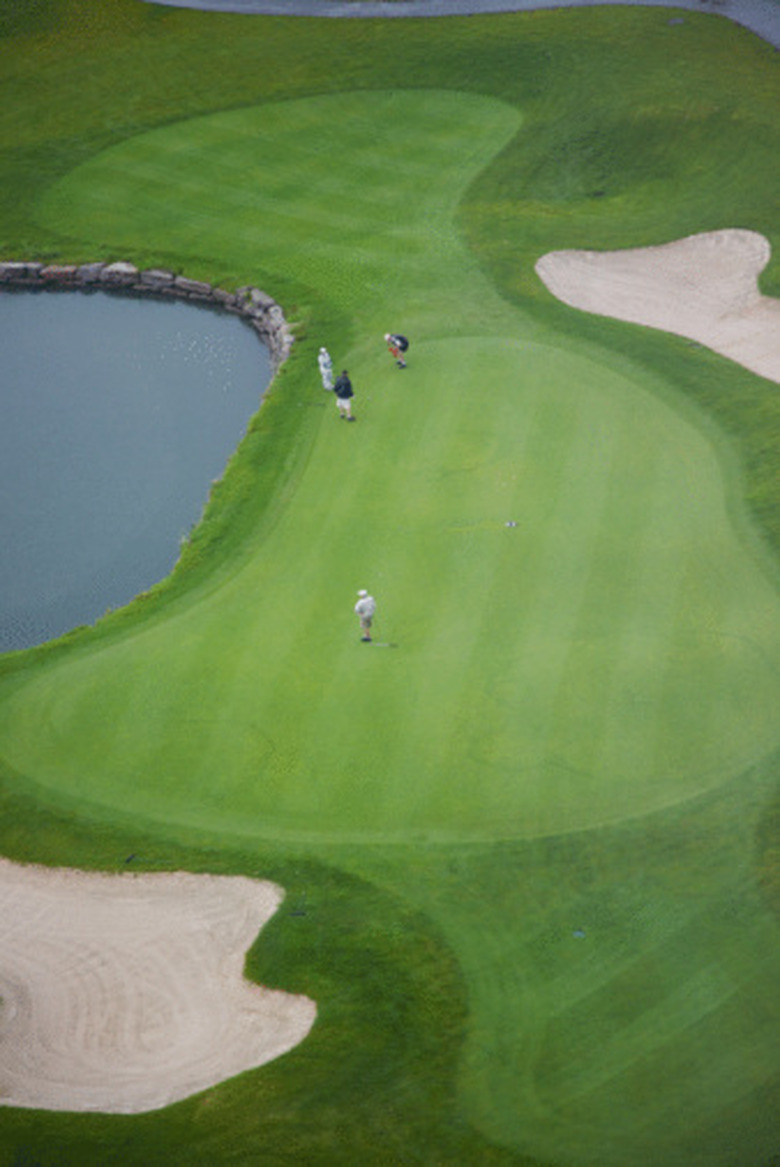How To: Identification Of The Difference Between Zoysia Grass & Bermuda Grass
Things Needed
-
Magnifying glass
-
Measuring tape or ruler
Both zoysia (Zoysia japonica) and Bermuda grass (Cynodon dactylon) are common lawn grasses in the United States, particularly in warmer areas such as Florida and the Gulf States. Both grasses are warm season perennial grasses that grow actively during the summer but go dormant and lose their color in winter. Telling the two grasses apart can be difficult, especially if you're not comparing them side-by-side.
Step 1
Examine the grass color. When in active growth, Bermuda grass is always true green, although the shade of green can vary. Zoysia is grayish-green. When dormant, zoysia turns golden brown. Bermuda grass is grayish-white when dormant. If you're comparing two lawns side-by-side, it's useful to know that zoysia goes dormant later in the fall than does Bermuda grass. Both grasses green up at the same time in the spring.
Step 2
Look for hairs on the surface of the grass, particularly close to where the grass blade emerges from the stalk. Use a magnifying glass, if possible. Bermuda grass has very small hairs on both sides of the leaf blade, but zoysia has hairs only on the top of the leaf.
Step 3
Run several blades of grass between your fingers. Zoysia is always smooth to the touch, but Bermuda grass can be either smooth or slightly fuzzy (pubescent). Since there is variation with Bermuda grass, you can't assume smooth-feeling grass blades are zoysia, but if the grass feels fuzzy, you can conclude that it's Bermuda grass.
Step 4
Measure several grass blades in order to determine the average width. Bermuda grass leaf blades grow as wide as 1/6 inch, but zoysia is finer, rarely growing more than 1/8 inch wide.
Step 5
Examine the juncture where the leaf blade emerges from the grass stem. Zoysia leaf blades grow off the stem at an 80 degree angle, whereas Bermuda grass emerges at a more acute 45 degree angle.
Step 6
Look at the overall texture of the lawn. Bermuda grass has an open, coarse texture, whereas zoysia is finely textured. However, the difference in texture is less obvious if the lawn was grown with one of the newer hybrid types of Bermuda grass rather than common Bermuda grass.
Step 7
Look for shaded areas in the landscape. Zoysia tolerates light to medium shade, whereas Bermuda grass grows well only in full sun. If the grass is sparse and spindly under tree canopies or in other shaded areas, the lawn is Bermuda grass. If the grass is full and thick, it's zoysia.
Step 8
Examine areas of the lawn that receive wear-and-tear, such as near driveways or where children play. Bermuda grass is very resilient and tough, but zoysia dies out in areas subject to foot traffic.
Step 9
Feel the lawn. Zoysia is very rigid and feels stiff and prickly; Bermuda grass is much softer to the touch.
Step 10
Look for seed heads in the lawn. Only Bermuda grass sends up seed heads. The seed spikes are held in a whorl at the top of long stems. Hybrid varieties of Bermuda grass produce fewer seed heads, so the absence of seed heads is not a definitive difference.
Step 11
Examine how short the grass has been mowed. Bermuda grass can be mowed quite short without damage, which is why it's the preferred grass for golf courses in warm areas. Zoysia must be kept no shorter than 1 and 1/2 inches.
Tip
What state are you in? On the East Coast, Bermuda grass grows only as far north as Maryland, whereas zoysia does well as far as Connecticut.
